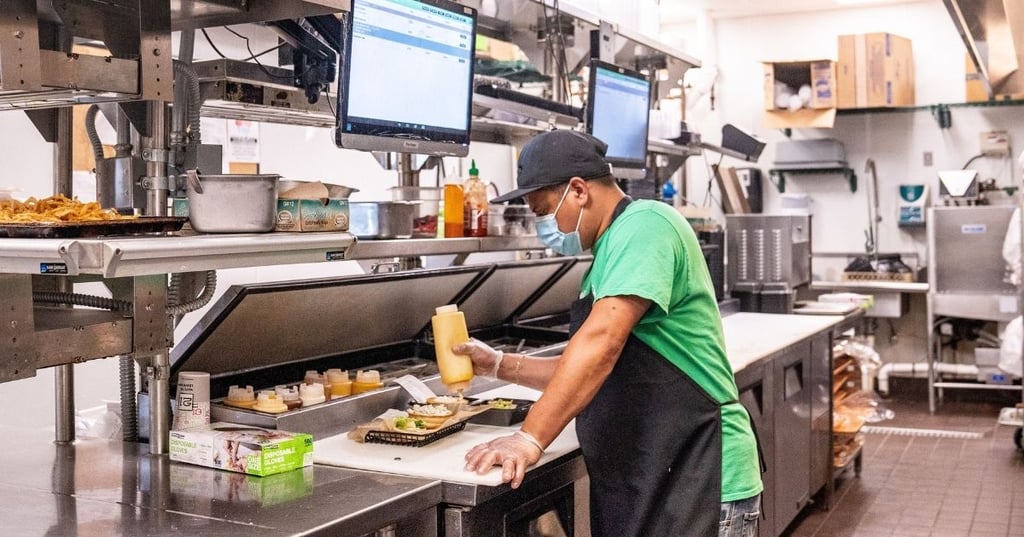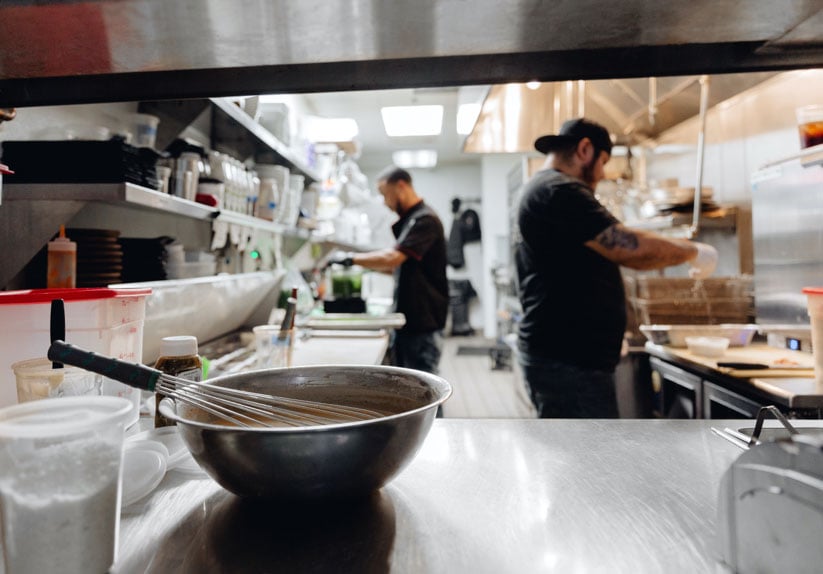
Burger 21
- Location: U.S.
- # of Restaurants: 15
- Type: American quick service
- Tech Stack: Revel, QuickBooks
- Key Feature: Multi-unit Management, Recipe Management
The goal
Burger 21 wanted a more efficient and successful way to map their invoice data. With the company continuing to open new restaurants it was difficult to manage all of the data and keep consistency easily across locations. Manually inputting invoice information was time-consuming and prone to errors.
[me] solution
MarginEdge takes the extra step to map invoice data by product, not by individual vendor item, so Burger 21 was able to compare true costs across stores. New franchise locations had product-level costs from the day they started processing invoices and knowing costs across locations helped the Burger 21 business as a whole.
“ The unification of our recipe changes, based on MarginEdge cost tracking data, and kitchen recipe display functionality has been huge for us with MarginEdge. ”
Ryan Johnston | Director of Accounting & IT
There is a lot to be said about a place that does burgers the right way. It takes incredible skill and creativity to reinvent such a classic, fast casual offering and prove that the marketing bark is worth a customer’s bite. They say it themselves, “We’re obsessed with burgers,” and that obsession doesn’t just stop for Burger 21 where the bun meets the patty.
In 2010, Burger 21 opened its first location in Tampa, Florida and started their franchise program just a year later. Despite having 4 corporate-owned and 15 franchise locations nationwide, the corporate team behind Burger 21 is a small one, requiring everyone to wear multiple hats including Director of Accounting and IT, Ryan Johnston. Ryan’s hats cover invoices, financial reviews, inventories from a macro level across storefronts, and on the IT side of things choosing systems and making sure they are functional and well-liked by their operations teams. Just like their burgers, they are obsessed with creating successful back-office systems too.
While Burger 21 had no trouble finding the right recipes for their menu, they struggled to find the right restaurant management software to help not hinder as they open new locations, provide powerful insight into food cost data at both the corporate and operations teams’ levels, and make closing out the period painless and perfunctory. That is until they found the right needle in their Tex-Mex Haystack: MarginEdge.
“Rolling out new stores with MarginEdge has been a lot easier than it used to be with other systems.”
What’s good for the franchisee is good for the franchisor
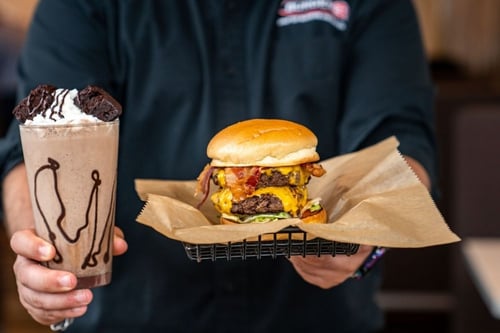
What makes MarginEdge a game changer for national franchises like Burger 21 is that the software takes the extra step to map invoice data by product, not by individual vendor item, meaning everything is mapped correctly (regardless of vendor or region) for a new franchise from the day they start processing invoices through MarginEdge.
“Rolling out new stores with MarginEdge has been a lot easier than it used to be with other systems,” says Ryan. As a franchisor, his team tracks that everything sold is rung up correctly by comparing invoices and food usage amounts to POS sales. Franchisees get the added benefit of using the platform to empower their restaurants without having to completely onboard their store from scratch.
Thanks to MarginEdge, both the franchisor and franchisee can track and monitor food costs from the first invoice because MarginEdge’s PMIX mapping for existing stores carries over Burger 21’s recipes, and attributes them to their Revel POS menu item buttons. “You want to make sure you have a system that’s going to allow you to map a recipe to a point-of-sale button once and then not have to map it again. We get that with MarginEdge which is huge.”
Once up and running, the corporate office has complete uniformity across recipes and menus from store to store, which in turn creates a clean system with accurate and meaningful data. Ryan says, “As long as the categories list is consistent, the profit and loss reports across locations are consistent. That gives us the best ability to have a true apples-to-apples comparison. It’s huge to be able to help your franchisees improve performance and know that the comparison is uniform.”
Corporate-owned store managers benefit from the software too because they’re bonused based on variance from target costs, so MarginEdge’s powerful reports give them key insight into where they need to make tweaks. They can also manage their own inventories and see their budgets in one place, giving them a hands-on way to optimize their store’s performance.
“Since MarginEdge provides such meaningful data powered by inventories, we started taking them once a week. It is a huge pain, but if you do it, you’ll save a lot of money.”
A tool that makes weekly inventories worthwhile. No, really.
With MarginEdge, Burger 21 cut overall food costs by 2%. Being able to make such impactful changes with just one platform has changed the way Ryan’s teams tackle everyone in the restaurant business’ favorite back-office activity: inventories.
“Since MarginEdge provides such meaningful data powered by inventories, we started taking them once a week. It is a huge pain, but if you do it, you’ll save a lot of money, so we do,” Ryan admits. You know that data has to be seriously powerful to justify weekly inventories! And powerful it is.
Bet your bottomline they’re tracking food costs
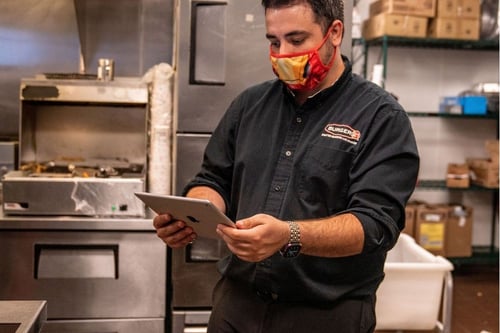
MarginEdge uses the weekly inventory data, continuous purchasing data from their invoices, and daily POS sales data to create supercharged, up to date, food costs available in the Theoretical Usage report. With no extra effort from the team, they have instant visibility into any discrepancies between sales, purchases, and inventory counts.
This means Ryan’s team can take immediate action, giving them a powerful control over costs, portioning, and theft prevention. Ryan’s team is also able to track store performance, and can preemptively alert franchisees before issues occur. He also notes how easy it is to set up and use the reporting features in the system, “It’s a lot like picking up an iPhone. You get an iPhone and people know how to use them immediately. And it feels like that. The user experience is very good and it’s very straightforward.”
Ryan adds, “There’s a lot of other back-office software out there where you have to have a PhD in that specific software to get the thing to do what you want it to do, and especially for a company of our size, that’s just not possible. No one has that kind of time.”
The accountants are happier too
According to Ryan, it’s not just the restaurant ops team that likes MarginEdge, “We find it to be a huge time saver in both the restaurant and here in the corporate office.” He adds, “It allows us to very quickly have visibility into what the units are buying and ensure that everything they are buying is linked to the correct product in MarginEdge,” which makes closing out the period a lot less painful.
With MarginEdge, Ryan’s team submits invoices by just snapping a photo of them, anytime during the period. 24-48 hours later, they are automatically processed and are available everywhere in the system, no longer delaying their ability to close the books. When inconsistencies come up, his team also has the ability to audit line-item information with the actual photo of the invoice in the system. “You catch discrepancies so much faster,” which let’s face it, is never a bad thing.
On top of that, most Burger 21 franchise locations have their own accounting teams, and because of MarginEdge’s integration with 14 accounting software systems, each accounting team can seamlessly integrate without needing to change or migrate to a new system. “Our accountants also love it because with Bill Pay, we’re saving money on checks,” Ryan adds.
“The unification of our recipe changes, based on MarginEdge cost tracking data, and recipe viewer functionality has been huge for us with MarginEdge.”
Recipes, two ways
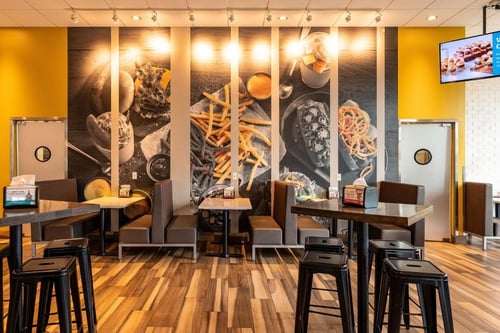
Most restaurant software solutions offer recipes in one of two ways: a digital guide with ingredients and quantities used by kitchen staff, or a way to calculate plate costs with the types of products and quantities being used in a menu item. Before MarginEdge, Ryan’s team was using two separate systems to tackle both needs, one for plate cost analysis and one for recipe viewer. “We were essentially maintaining two databases,” Ryan notes, to update their menus and keep them functional. Any edits made in one system had to be manually updated in the other and they needed to communicate those changes with all 19 corporate and franchise locations, which wasn’t exactly a walk in the walk-in. As Ryan says, “The communication of changes to recipes were constantly getting lost.”
With MarginEdge, Ryan’s team was able to not only measure, track, and edit plate costs with recent product prices, but also communicate those changes to the kitchen teams with zero added effort or oversight. They can do this because MarginEdge’s recipe module covers both food cost analysis per menu item and recipe viewer functionality. Today Ryan says, “The unification of our recipe changes, based on MarginEdge cost tracking data, and recipe viewer functionality has been huge for us with MarginEdge. It saves a lot of time communicating to our restaurants and prevents important changes from being lost in the noise.”
Ryan adds, “If there’s an error on the recipe side, the kitchen can look at the recipe and say, ‘Hey I don’t think this is right,’ or your target costs might show a big variance, which prompts the managers to check the recipes because they can see that and find it that way. If there’s a recipe that’s wrong, it’s wrong in two places which is actually an advantage because you find them more quickly.”
Fast casual meets fast service
You would think with so much daily usage of the software that hiccups sometimes come up, and (spoiler alert) they do. With all of their weekly invoices, Ryan estimates that he sends invoice adjustment requests a few times a week, but getting a fast response is never a problem. Anytime he or his team submits a customer service ticket, they get a response in less than two hours and complete resolution of the issue in less than a business day. “We’ve never had anything invoice related go longer than the following morning,” which keeps Ryan’s team on track and up to date so they can keep doing what they do best: obsessing over burgers.


